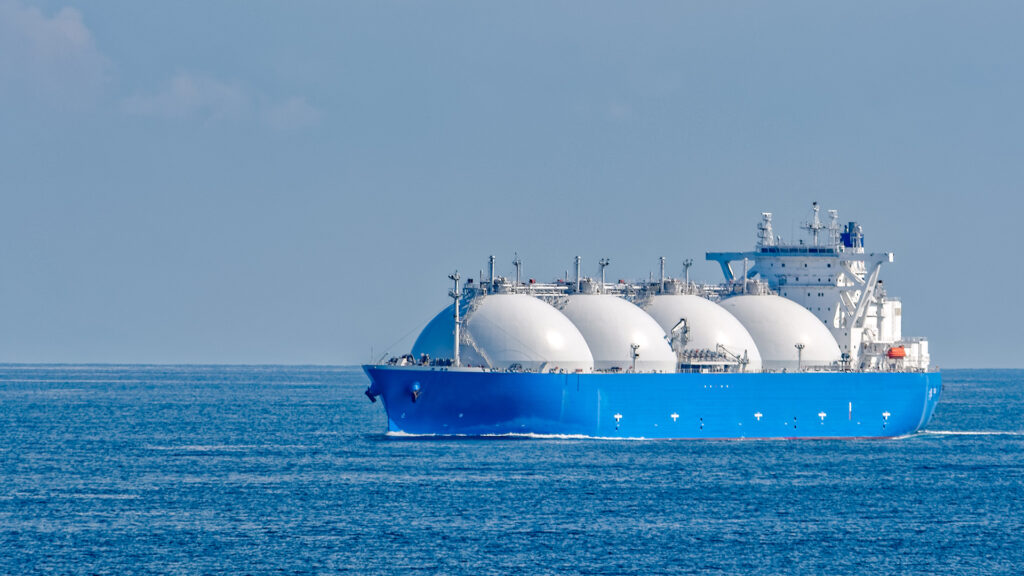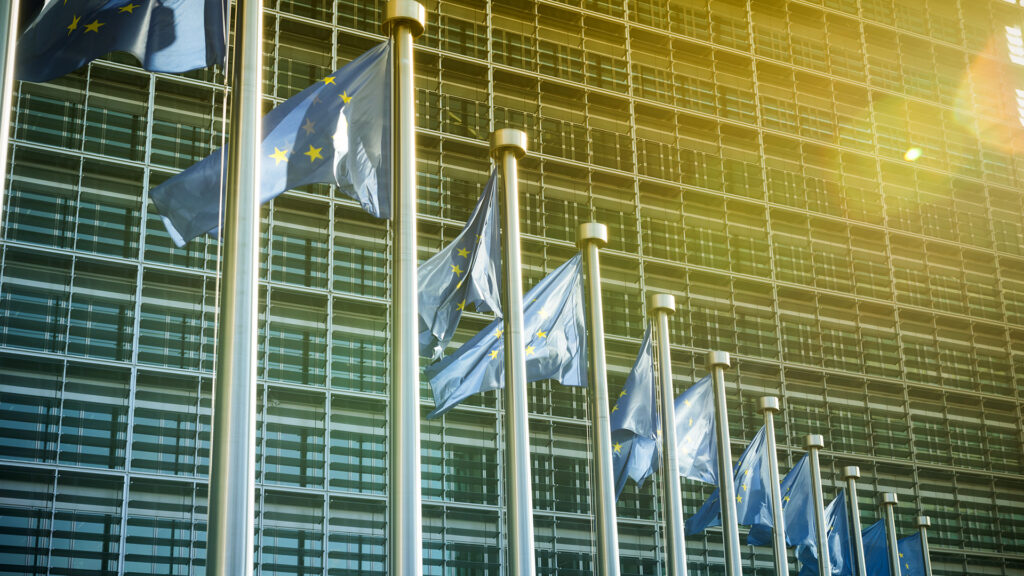Critical Raw Materials: Regulatory Initiatives
In this briefing we discuss regulatory initiatives by the European Commission, the United States and the UK on the security of supply of critical raw materials.
In her 2022 State of the Union Address, European Commission (Commission) President Ursula von der Leyen announced a proposal for a European Critical Raw Materials Act (the Act).1 She framed critical raw materials, such as lithium and rare earth elements, as being key for the future of Europe, saying that they “are already replacing gas and oil at the heart of our economy.”2 The Act aims to prevent Europe “falling into the same dependency [on a small number of suppliers] as with oil and gas”.3 It will do this by addressing all stages of the raw materials supply chain and increasing resilience along its whole length.
The EU is not alone in placing an increased focus on critical raw materials. Less than two months after taking office, President Biden signed an executive order4 launching a review of critical product supply chains, including critical minerals, computer chips and batteries. More recently, in July 2022, the UK also published its first ever critical minerals strategy.sup>5 What, then, are the reasons behind this focus on critical raw materials, and what are governments trying to achieve?
What are critical raw materials?
Critical raw materials are minerals which are of significant industrial and technological importance, but which are in limited supply. The Act identifies around 30 or so key minerals, including lithium, cobalt, platinum, tungsten, and rare earth elements.6 Demand for them is projected to soar in years to come – for example, demand for lithium in the EU is expected to increase 60 times by 2050,7 while demand for rare earths will increase five-fold by the end of the decade.sup>8
The reason for this is that these minerals are essential to the manufacture of everything from computer chips and electronics, to wind turbines and solar panels, and electric vehicle batteries. As the world moves away from fossil fuels and towards cleaner sources of energy, demand for critical minerals will increase massively. Indeed, without them,“[t]here is no green transition, no internet, no nano medical research, no advanced weaponry, basically virtually no technical solutions to our planetary problems”.9
However, the critical raw materials supply chain suffers from several challenges.
What are the challenges?
First, these minerals are either not found in abundance, are difficult to extract, or both. They may also be by-products or co-products of other more commonly mined commodities. This leads to a disconnect between supply and demand for the minerals.
Secondly, as discussed, demand is growing rapidly, which has led to significant price volatility. For example, lithium prices rose by 400% in the year to May 2022.10
Thirdly, these minerals are geographically concentrated. Around one half of the world’s cobalt supply is located in the Democratic Republic of the Congo alone, South Africa possesses around 40% of the world’s manganese, while lithium is heavily concentrated in Chile, Argentina and Australia.11 However, when it comes to extraction and processing, China dominates the world market, with almost 90% of rare earth elements being processed there.12 This was not always the case, however. Until the 1980s, it was the US which had a virtual monopoly over world rare earth supplies, from a single mine in the Mojave Desert, called Mountain Pass.13 Since then, the Chinese government has provided significant investment and subsidies to domestic producers, which has gradually priced most other producers out of the market. This gives one state enormous power over world trade in these minerals, which it is not afraid to use. Between 2005 and 2012, China implemented export quotas and taxes on rare earth elements, which led to significant market distortions and price volatility. As critical minerals become ever more important, the consequences of China taking similar action again become much greater.
Finally, there are often no alternatives to the use of critical minerals. Electric vehicle batteries, for example, require a precise combination of materials to achieve optimum performance and economic viability. While in the longer term, substitution may become possible as technology advances, currently it is not.14
As the world looks towards achieving net-zero emissions, governments are recognising the importance of securing stable supplies of critical minerals. This is leading to greater regulatory focus on the industry and new government strategies.
The EU strategy
The Act proposed by Ms von der Leyen is the centre piece of the EU’s strategy on critical raw materials, with the Commission seeing it as key to Europe’s ambition to become the first climate neutral continent15 The strategy recognises that ensuring access to stable supplies of these minerals cannot be delivered by trade diversification alone, and that a holistic approach is needed.16
The EU’s strategy has four aims: 1) focusing on strategic applications of critical raw materials; 2) building a network of European agencies; 3) building a more resilient supply chain; and 4) creating a sustainable and level playing field.
On the first aim, the Act will provide “a shared understanding of which critical raw materials can be considered as particularly strategic”, having regard to energy transition and defence needs.17 The hope is that this will provide a clear signal to the private sector on priority investment and development needs.
Secondly, a European network will increase resilience, and anticipate and respond to supply chain disruptions.
Thirdly, projects across the supply chain will be targeted for support, covering mining, refining, processing and recycling. The focus on the whole of the supply chain is particularly important, as Europe has only very small reserves of critical raw materials itself. The EU sees increased investment in recycling as a key part of ensuring a future supply for the continent’s needs. Such projects might also benefit from a simplified approval process and easier access to finance.
Finally, strategic reserves will be built up to smooth market instability, in such a way that countries across the EU share the benefits of this equally.
The Commission has launched a public consultation on its plans, allowing individuals and organisations to comment on the challenges faced in securing stable supplies of critical raw materials, the EU’s policies to date in this area, and how these can be improved.18 The consultation window is open until 25 November 2022, and can be accessed here.
The US strategy
Meanwhile, the US has launched the Minerals Security Partnership (MSP), an initiative to develop supply chains. Similarly to the EU’s Act, it will target the whole of the supply chain, from production and processing, to recycling, and is made up of a group of industrialised western economies: Australia, Canada, Finland, France, Germany, Japan, South Korea, Norway, Sweden, the UK, the US and the EU.19 The MSP is focused on ensuring that critical mineral supply chains operate in a way which supports the realisation of the economic potential of mineral resources. Similarly to the EU’s efforts, it aims to use public investment as a signalling tool to the market.sup>20
The MSP held its first meeting in New York in September 2022, during the opening of the UN General Assembly. Attended by mineral-rich countries in South America, Africa and Asia, the meeting considered potential new projects of interest to MSP members.21
The US is also looking to regain its former strength in rare earths in particular, with the Department of Defense providing funding towards the reopening and expansion of the old Mountain Pass mine, clearly with national security considerations in mind.22
The UK strategy
In July 2022, after many years of an absence of government strategy in this area, the UK published its first ever policy paper on critical minerals.23 As with the EU and US, this is driven by a growing recognition that critical mineral supplies will be key to the UK’s automotive and battery industries.
Where the EU’s strategy is focused more on efforts within Europe, the UK’s strategy takes more of an international approach to the issue. The UK’s strategy can be divided into three columns: 1) accelerating the UK’s domestic capabilities; 2) collaborating with international partners; and 3) enhancing international markets.
On the first column, the UK strategy aims to maximise extraction of domestic deposits. The world’s fourth largest tungsten reserve is located in Devon, although several recent attempts at reopening the mine have encountered difficulties. There are also lithium reserves in Cornwall and it is hoped that lithium can be economically extracted from underground brine reserves. This aside, however, the UK is poor in critical minerals. For that reason, the UK’s strategy also seeks to develop a circular economy in critical minerals, by improving resource efficiency and recycling. Currently, the UK exports most of its critical mineral-containing waste. By increasing domestic recycling capability, a new secondary source of critical minerals could be developed. This will also include research and development into mining and recycling technology.
Under the second column, the UK will seek to diversify its supply and thus increase its resilience. The importance of diversification has been highlighted recently in the nickel industry. While not a critical mineral, in that it is more abundant in supply, it is still an important component of stainless steel and batteries. Russia is the world’s third largest nickel producer and western buyers have sought alternatives following the invasion of Ukraine. This, along with other factors, caused nickel prices to soar, ultimately forcing the London Metals Exchange to halt nickel trading for over a week in March 2022.24 This incident is the subject of an investigation by the Bank of England and Financial Conduct Authority, as well as multiple lawsuits from traders and funds.25 However, diversifying the UK’s sources of critical minerals relies on sufficient alternative sources being available.
This is what the third column aims to achieve. The UK government wants to leverage London’s existing expertise, as home to the London Metals Exchange, to become the world centre of critical mineral financing. This will be done by improving the functioning of markets and opening up new sources of minerals worldwide, thus reducing China’s dominance.
Conclusion
It is clear that in capitals across the world, attention is moving to how countries can secure supplies of critical minerals for use in cutting-edge technology and the energy transition. Most of all, governments are keen to avoid falling into the same dependency trap as happened with oil and gas in the 20th and first two decades of the 21st centuries. This focus is timely, given the projected explosion in demand for critical raw materials in the coming decades. These latest developments in strategy in the EU, US, UK and other westernised nations, and the policies which will flow from them, look set to open up a host of new commercial opportunities in this area, from domestic recycling and processing, to financing and operation of extraction projects overseas.
Footnotes
- State of the Union Address by President von der Leyen (europa.eu)
- Ibid
- Ibid
- Executive Order on America’s Supply Chains – The White House
- Resilience for the Future: The UK’s critical minerals strategy – GOV.UK (www.gov.uk)
- Ibid
- Policy Commission Securing Technology-Critical Metals For Britain (birmingham.ac.uk)
- State of the Union Address by President von der Leyen (europa.eu)
- The scramble for rare earths carries big geopolitical risks | Financial Times (ft.com)
- Resilience for the Future: The UK’s critical minerals strategy – GOV.UK (www.gov.uk)
- Policy Commission Securing Technology-Critical Metals For Britain (birmingham.ac.uk)
- State of the Union Address by President von der Leyen (europa.eu)
- The scramble for rare earths carries big geopolitical risks | Financial Times (ft.com)
- Resilience for the Future: The UK’s critical minerals strategy – GOV.UK (www.gov.uk)
- Critical Raw Materials Act (europa.eu)
- Ibid
- Ibid
- European Critical Raw Materials Act (europa.eu)
- Minerals Security Partnership – United States Department of State
- Minerals Security Partnership Convening Supports Robust Supply Chains for Clean Energy Technologies – United States Department of State
- Ibid
- DoD Awards $35 Million to MP Materials to Build U.S. Heavy Rare Earth Separation Capacity U.S. Department of Defense Release
- Resilience for the Future: The UK’s critical minerals strategy – GOV.UK (www.gov.uk)
- Inside Nickel’s Short Squeeze: How Price Surges Halted LME Trading – Bloomberg
- LME faces new legal action over decision to cancel nickel trades | Financial Times (ft.com)

Download a PDF version of ‘Critical Raw Materials: Regulatory Initiatives’









